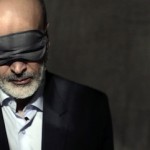Part II: Subtext is Different From Translation
Towards the end of The Celluloid Closet, playwright and actor Harvey Fierstein discusses his response to attempts to label his work “universal” rather than gay:
All the reading I was given to do in school was always heterosexual. Every movie I saw was heterosexual, and I had to do this translation…I had to translate it to my life rather than seeing my life. Which is why when people say to me your work is not really gay work, it’s universal […] I say “up yours.”
You know, it’s gay, and that you can take it and translate it for your own life is very nice, but at last, I don’t have to do the translating, you do.
Fierstein’s speech gives us a better vocabulary for examining the intersections of straight (often conservative, often Christian) audiences and gay themes in a post-celluloid closet age. It would be silly to postulate that Torch Song Trilogy had some sort of straight “subtext” that its commentators were postulating and Fierstein refuting. Heterosexuality is broadly accepted and other than some gay readers who might accuse a gay writer of selling out, nobody would be disturbed by the presence of heterosexuality in a gay writer’s work. It would have no reason to be hidden. Indeed, given the fact that heterosexuality has been the norm for generations, it has hardly had the opportunity to develop a set of codes to furtively signal its presences to like minded practitioners also in hiding. (Though, one might argue, where explicit representations of sex are forbidden or censored, the artist can find visual cues to signal to the initiated that it has taken place. I recently asked a friend why Jonah Hill’s character was carrying his shoes across campus in 22 Jump Street; he just laughed at me.)
It’s worth asking a question about Fierstein’s interaction, though. To whom does Fierstein have to assert his work’s essential gayness? Who is the reader who wants to make it “not really gay” but “universal”? It is not as though the straight audience is underserved, needing Torch Song Trilogy to be straight because they can find no representations of their straight lives anywhere in Hollywood and thus have to settle for the gay representation that is the closest. Russo’s claim–one that Fierstein seconds–is that lacking open depictions of their own lives, gays had to turn to subtext and translation to avoid symbolic annihilation. That’s not a (realistic) fear for straight readers.
It seems to me that what is driving Fierstein’s interrogators is a denial of similarity. Perhaps some viewers do not want to accede to the fact that gay themes and straight themes have enough commonality that they can be “translated.” Is there a closet homophobia in the viewer who wants to make Torch Song Trilogy “universal”? The fear that if one empathized with a work of art or identified with a character’s struggles, he could no longer dismiss that character and his experiences as wholly “other”?
 I think there is, and I think that some of this fear is what is driving the increasingly nasty and loud debates over works like How to Train Your Dragon and, of course, Frozen. It’s not just that gay themes are becoming more open, less subtextual (though I think they are), but that they are being presented as more normative that is fueling the fires of debate. As long as gay themes remain at the level of subtext, the straight reader can continue to enjoy the works containing them, however overt are their signs to the initiates. Once the theme or character becomes openly gay, however incidentally, the straight audience that doesn’t want to accept gays into the mainstream is put to a decision: accept that translation is possible, claim (against box office and consensus) that the gay theme substantively hinders the work of art’s efficacy, or reject the work outright as having nothing to offer them.
I think there is, and I think that some of this fear is what is driving the increasingly nasty and loud debates over works like How to Train Your Dragon and, of course, Frozen. It’s not just that gay themes are becoming more open, less subtextual (though I think they are), but that they are being presented as more normative that is fueling the fires of debate. As long as gay themes remain at the level of subtext, the straight reader can continue to enjoy the works containing them, however overt are their signs to the initiates. Once the theme or character becomes openly gay, however incidentally, the straight audience that doesn’t want to accept gays into the mainstream is put to a decision: accept that translation is possible, claim (against box office and consensus) that the gay theme substantively hinders the work of art’s efficacy, or reject the work outright as having nothing to offer them.
 In considering those choices, its worth underscoring that in the cases of Harry Potter and How to Train Your Dragon 2 that the authors/artists only confirmed their characters’ gayness after commercial success and popular acclaim had been achieved. In the latter case, it was emphasized that the decision to make the character gay was an improvisational one made by the actor and was not intended as a confirmation of an pre-existing subtextual readings. While gay characters and themes are increasingly accepted in mainstream society, there is still a commercial incentive for artists and studios (or publishers) to not alienate less tolerant viewers while courting those in the minority. As the gay audience becomes less willing to settle for subtextual hints and demanding to see their life rather than universal works that they can translate to their lives, look for more examples of gay characters whose lifestyle or sexual orientation is briefly (fleetingly) alluded to in the film itself and then buttressed through paratextual means (interviews, press releases, commentary).
In considering those choices, its worth underscoring that in the cases of Harry Potter and How to Train Your Dragon 2 that the authors/artists only confirmed their characters’ gayness after commercial success and popular acclaim had been achieved. In the latter case, it was emphasized that the decision to make the character gay was an improvisational one made by the actor and was not intended as a confirmation of an pre-existing subtextual readings. While gay characters and themes are increasingly accepted in mainstream society, there is still a commercial incentive for artists and studios (or publishers) to not alienate less tolerant viewers while courting those in the minority. As the gay audience becomes less willing to settle for subtextual hints and demanding to see their life rather than universal works that they can translate to their lives, look for more examples of gay characters whose lifestyle or sexual orientation is briefly (fleetingly) alluded to in the film itself and then buttressed through paratextual means (interviews, press releases, commentary).
Look too for more instances of less comfortable straight audiences blaming the messenger (i.e. the film critic or teacher) for reading too much into incidental remarks or fleeting references in a film. As a strategy for holding on to a film that performs the cultural work of inviting us to accept homosexuality and heterosexuality as analogous without having to embrace (or even acknowledge) its underlying message, shushing the critic who spotlights such examples may be silly, but it also may be the best card in a weak hand.
Postscripts
1) It should probably go without saying that there is a difference between descriptive criticism and evaluative criticism. The shift from subtext to paratext in presenting gay themes, particularly in animated films, has seemingly rendered many otherwise perceptive readers unable to separate a critic’s description of a film with gay themes to his or her estimation of them. I liked Frozen a lot. I acknowledged in my review that I thought there was a pretty strong gay subtext, but I don’t think this hurt the film. Strictly speaking, though, under the terminology I’ve used here, I would suggest that what we are dealing with in Frozen is not a film with subtext but one which invites, rather overtly, translation. While Elsa’s experiences may resonate deeply with those who grew up gay, the acknowledgement of that affinity does not require asserting that the character is lesbian, only that certain feelings in her adolescent experience (loneliness, isolation, shame) are shared by gay and straight alike (even if they are felt more frequently by one or the other). The purpose, then, of pointing out films that have (intentionally or not) gay-friendly themes need not be to court debate but to invite dialog. It matters less whether characters such as Shakespeare’s Iago or Sebastian truly are gay than that we learn something about ourselves and the way we think about human sexuality when we ask the questions of why we think they might be or why it matters if they are.
2) “Paratexts,” “peritexts,” and “epitexts” are terms taken from Genette. I have a basic introduction of their application to film criticism in my essay Whose Dead Man Walking?: The Director Commentary as Peritext.












